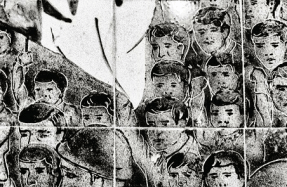DIANA MARKOSIAN SANTA BARBARA

In October 1996, the Armenian American photographer Diana Markosian was seven years old, living with her family in Moscow, when her mother told her and her brother to pack their things; they were going on a trip. She didn’t say where. “We left immediately,” Markosian told me recently, “without even saying goodbye to our father.” They landed in a new world that felt completely foreign but eerily familiar too, almost as if it had been imprinted on her dreams.
“I remember the sunlight streaming through the windows,” Markosian said. “All the palm trees. We walked through the airport, and everyone was smiling and wearing Disney hats, and shorts and sneakers, and eating hamburgers. My mother wore a white eyelet dress, and she was holding a picture of this older man. I’d never seen her so anxious before.” A real-life version of the man in the picture approached, also smiling. Markosian, whose first name is pronounced Dee-ahn-ah, didn’t speak any English, but she understood that he seemed to know her mother and that he was offering the children orange juice to drink.
They had arrived in Santa Barbara, California, a place that, particularly for people living in post-Soviet Russia in the 1990s, symbolized a fairy tale. “Everyone knew , no matter who you were,” Markosian told me of her early childhood, spent in between Yerevan, Armenia, and Moscow. The daytime series, named for the city where its’s often outlandish and humorous touches didn’t always hold with American audiences, but in Russia, where it debuted in January 1992, its pop fantasy, dubbed in Russian, delivered a timely distraction from the recent collapse of the economy and the grim atmosphere that fell over the country.
You’re reading a preview, subscribe to read more.
Start your free 30 days





